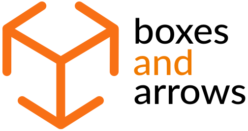In this podcast, Chris Baum speaks with Donna Spencer, Lynne Polischuik, Justin Davis and Erin Jo Richey at the 2012 IA Summit about their panel discussion: “Taking the plunge: Diving into Indie UX.” They share practical and personal experience of being an indie designer.
Continue readingArticles by this author:
Posted by
Driving Holism in Cross-channel Projects
Posted by
Chris Baum talks with Patrick Quattlebaum at the 2012 IA Summit about his insights
on tools that designers can use to help companies develop experiences across channels.
A Wiser Interaction
Posted by
In this podcast, Chris Baum talks
with Bill DeRouchey about how
Interaction 10 is being redesigned based on lessons from previous
years.
When Life Intervenes
Posted by
Samantha Bailey, the 2009 IA Summit Chair, talks about her approach to this year’s IA Summit, how the Summit community has changed, and what it means to be a part of this community of practice.
Continue readingAll It’s Cracked Up To Be
Posted by
As IxDA’s Interaction 09 kicks off the 2009 conference season, Chris Baum reflects back on last year’s inaugural event and appreciates the real-life impact of the interaction design craft.
Continue reading
